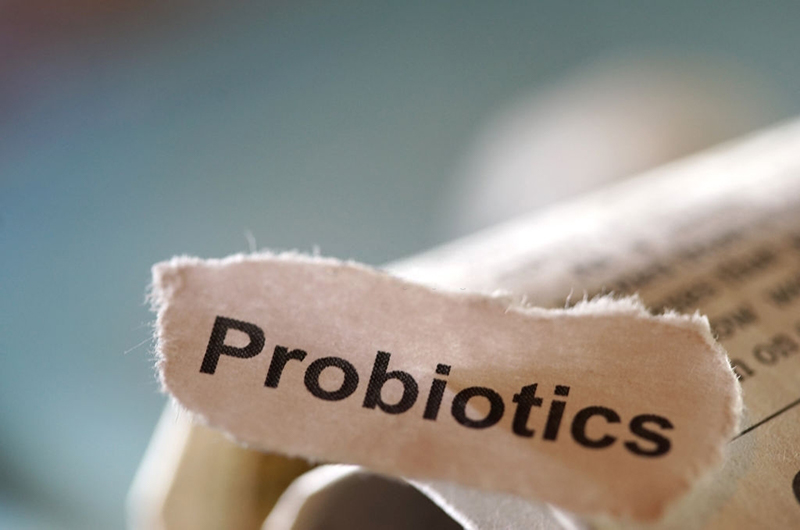I owe you an apology if you’re reading this. Around six years ago, the number of products claiming to enhance the skin’s microbiome, or the collection of microorganisms living on its surface, skyrocketed. Probiotics, or living bacteria originating from fermented foods or dirt, were used in the concoctions. probioticseverything.comm’lis probiotic
Regardless of the source, the plot was the same: These probiotics were supposed to rebalance your skin’s microbiome by adding “good” bacteria, which would then (by a fairly acrobatic leap of logic) evict the purported “bad” bacteria, reducing inflammation and, in turn, bestowing you with happier, healthier skin. probioticseverything.comm’lis probiotic
Parts of that story are real, but when you connect them with a daisy chain of Boolean logic (if this, then that), probiotic-infused skin care gains a scientific halo. But, like all halos, it’s a figment of the imagination. When reporting on this phenomenon in the mid-teens, I (and many other editors) made the same mistake. probioticseverything.comm’lis probiotic
What We Know About the Microbiome of the Skin
What we understood back then: There was — and still is — a lot of studies associating skin and gut microbiome imbalances to inflammatory skin disorders including acne, rosacea, and eczema (there have been ample papers published in journals such as Clinics in Dermatology, the Journal of Investigative Dermatology, and the Journal of the American Academy of Dermatology). There are also a lot of folks who have put probiotic-infused skin-care products to the test and declare that they work. probioticseverything.comm’lis probiotic
What I know now: Something caught my attention during a video conversation with Larry Weiss, the now-unaffiliated founding chief medical officer of one of those mid-teens probiotic-based firms. Even if it contains promising probiotics, we can’t claim that skin care can “recolonize” the facial microbiota, he says. Skin care including some probiotics may impact (and perhaps improve) our skin until it is washed away or the living microorganisms die, but it does not fundamentally alter the microbiotic environment on our skin, as I previously stated. probioticseverything.comm’lis probiotic
Do Probiotics Have Any Skin Benefits?
As a new generation of probiotic skin-care products emerges, I return from the past to correct the record. There are a slew of drawbacks to relying on probiotic skin care (and “issues” is a nice word for it). Even the world’s leading microbiome researchers are unsure which probiotic strains will have a long-term — or even short-term — influence on the skin, or how much of them we’ll need to observe a difference. “Right now, science has provided promising leads, but nothing particularly concrete,” says Tami Lieberman, an assistant professor at MIT’s Institute for Medical Engineering and Science who studies colonization and personalisation in the human microbiome. probioticseverything.comm’lis probiotic
According to Teo Soleymani, M.D., a dermatologist at UCLA Health, a type of bacteria called lactobacillus is now used in probiotic lotions and serums for all the wrong reasons. It’s popular, he argues, because it’s one of the few bugs that will play nice and stay alive in an unrefrigerated cosmetic formulation, not because it’s a common strain on healthy human facial skin (it isn’t), or because we have hard evidence that smoothing it on helps your skin (we don’t). probioticseverything.comm’lis probiotic
Another concern is that the majority of research on beneficial probiotic therapy focuses on the gut microbiota or pathways, rather than the skin. (The most widely prescribed probiotic, VSL#3, is used to treat gastroenterological disorders like ulcerative colitis, according to Robert Urban, a San Diego pharmacist.) probioticseverything.comm’lis probiotic
Regrettably, the advantages are not transferable. In fact, according to microbiologists like Kristin Neumann, who operates an independent lab in Erlangen, Germany, the facial microbiomes of two total strangers have more commonalities than the gut microbiome and facial microbiome of the same person. And that can be beneficial. “The skin microbiome, in many ways, provides more potential for universal solutions than the gut microbiome,” says Lieberman. “Microbial species reside on practically everyone’s skin, but this is not the case in the stomach. On the surface, the microbial community appears to be simpler.” probioticseverything.com
The bad news is that after scientists have found those magical bacteria, they will have to overcome a few more obstacles. According to the specialists I spoke with, the most difficult obstacle is dose. “We have no idea what dosage [your skin requires], whether the active ingredient is active, or how long it will remain on your skin,” explains Dr. Soleymani. Most probiotics used in skin care now aren’t still-living bacteria in the first place, so even if a product is packed with them, they’re unlikely to provide any of the promise advantages seen in studies.
Once an effective dose has been determined, scientists and chemists must figure out how to deliver that effective dose of (likely live) microbes in a stable formula at room temperature or with the aid of refrigeration (which would be prohibitively expensive), and ensure that they survive long enough on the skin to be useful.
Probiotic Skin Care in the Future
Is probiotic skin care a load of nonsense? No, on the contrary. Probiotic skin care has the potential to revolutionize the skin-care industry, but not in the way we expected. “When I walk out in the sun, I may have a probiotic [microorganism] that lives on my face and secretes UV [protection]. You might imagine doing something like this to get any desired impact “According to Lieberman. Weiss agrees, noting that probiotics have the ability to offer beneficial quantities of ceramides, acids, and other nutrients without the need for continual reapplication.
For the time being, we’ll have to do things the old fashioned way: “Improving and expanding your biome takes time and labor,” says Heather D. Rogers, M.D., a board-certified dermatologist and dermatologic surgeon in Seattle. Dr. Rogers recommends eating fermented foods like yogurt and kimchi to introduce beneficial bacteria into your body, although as we previously stated, it’s unclear how this may affect your skin.
The future is on its way, but it isn’t quite here yet.

